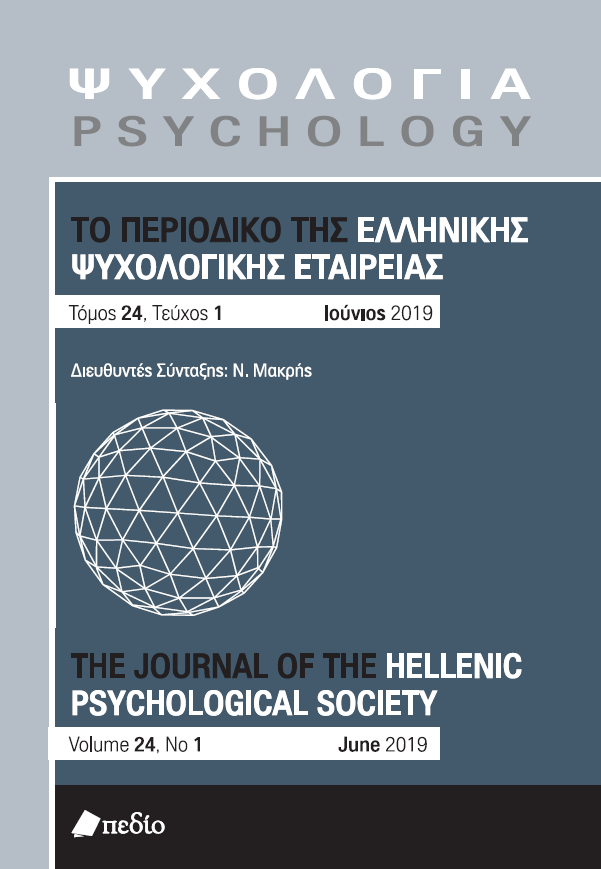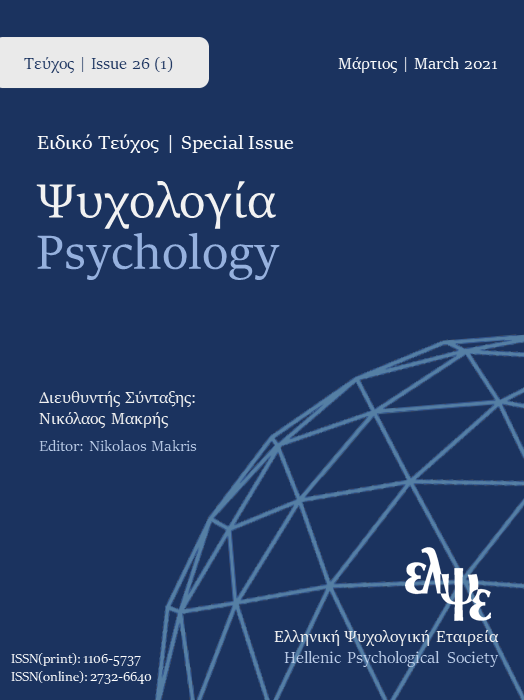«Αντιμετωπίζω τον Εκφοβισμό στο Σχολείο»: Ένα πρόγραμμα πρόληψης και υποστήριξης μαθητών/ριών Δευτεροβάθμιας Εκπαίδευσης

Περίληψη
Ο σκοπός της παρούσας έρευνας είναι να παρουσιάσει τα αποτελέσματα από την εφαρμογή ενός παρεμβατικού προγράμματος για την αντιμετώπιση του σχολικού εκφοβισμού. Το Πρόγραμμα «Αντιμετωπίζω τον Εκφοβισμό στο Σχολείο» εστιάζεται στην εκμάθηση δεξιοτήτων αντιμετώπισης του εκφοβισμού από την πλευρά του θύματος με κεντρικό μήνυμα: «Μείνε ήρεμος/η/ Σκέψου καθαρά». Το υλικό της παρέμβασης, το οποίο σχεδιάστηκε στο Πανεπιστήμιο Flinders στην Αυστραλία περιλαμβάνει: α) ένα DVD με τέσσερις μικρές ταινίες στις θεματικές ενότητες: κοινωνικός αποκλεισμός καθώς και σωματικός, λεκτικός και ηλεκτρονικός εκφοβισμός, β) τετράδιο εργασίας (για κάθε μαθητή), γ) φύλλα εργασίας – μαθημάτων, και δ) φύλλα ανατροφοδότησης και οδηγίες για τους εκπαιδευτικούς. Για την ελληνική προσαρμογή του προγράμματος διεξήχθη αρχικά πιλοτική έρευνα με 185 μαθητές, ηλικίας 12-14 ετών. Στην τελική εφαρμογή και αξιολόγηση συμμετείχαν 932 μαθητές από 14 σχολεία της Θεσσαλίας (12 σχολεία στην ομάδα παρέμβασης και 2 στην ομάδα ελέγχου). Για την αξιολόγηση της παρέμβασης μελετήθηκαν: α) ο βαθμός θυματοποίησης των μαθητών/τριών, β) τα αντιλαμβανόμενα συναισθήματα ασφάλειας στο σχολείο, και γ) η εκτιμώμενη αυτό-αποτελεσματικότητα για την αντιμετώπιση του εκφοβισμού. Μετά την εφαρμογή του προγράμματος, οι σοβαρά θυματοποιημένοι μαθητές (περίπου 10% των συμμετεχόντων) δήλωσαν μείωση της συχνότητας έκθεσής τους στον εκφοβισμό, ενώ ενισχύθηκαν τα συναισθήματα ασφάλειάς τους στο σχολείο. Τα συνολικά ευρήματα από την αξιολόγηση δείχνουν, ότι το είδος της παρέμβασης που εφαρμόστηκε, μπορεί να παίξει σημαντικό ρόλο στην ενδυνάμωση των εφήβων για την υιοθέτηση πιο αποτελεσματικών στρατηγικών αντιμετώπισης του σχολικού εκφοβισμού.
Λεπτομέρειες άρθρου
- Πώς να δημιουργήσετε Αναφορές
-
Ρούση - Βέργου Χ., Ανδρέου Ε., & Διδασκάλου Ε. (2019). «Αντιμετωπίζω τον Εκφοβισμό στο Σχολείο»: Ένα πρόγραμμα πρόληψης και υποστήριξης μαθητών/ριών Δευτεροβάθμιας Εκπαίδευσης. Ψυχολογία: το περιοδικό της Ελληνικής Ψυχολογικής Εταιρείας, 24(1), 73–92. https://doi.org/10.12681/psy_hps.22387
- Τεύχος
- Τόμ. 24 Αρ. 1 (2019)
- Ενότητα
- ΕΙΔΙΚΟ ΑΦΙΕΡΩΜΑ

Αυτή η εργασία είναι αδειοδοτημένη υπό το Creative Commons Attribution-ShareAlike 4.0 International License.
Το περιοδικό ΨΥΧΟΛΟΓΙΑ έχει υιοθετήσει μία πολιτική Platinum open-access. Τα έξοδα υποβολής, επεξεργασίας ή δημοσίευσης των εργασιών καλύπτονται από την Ελληνική Ψυχολογική Εταιρεία. Τα πνευματικά δικαιώματα των δημοσιευμένων εργασιών προστατεύονται από την άδεια 'Creative Commons Attribution-ShareAlike 4.0 International'. Οι Συγγραφείς διατηρούν τα Πνευματικά Δικαιώματα και χορηγούν στο περιοδικό το δικαίωμα της πρώτης δημοσίευσης. Η άδεια αυτή επιτρέπει σε τρίτους, να χρησιμοποιούν την εργασία σε οποιαδήποτε μορφή, με την προϋπόθεση της διατήρησης των διατυπώσεων που προβλέπονται στην άδεια σχετικά με την αναφορά στον αρχικό δημιουργό και την αρχική δημοσίευση στο περιοδικό ΨΥΧΟΛΟΓΙΑ. Επιπλέον, κάθε διανομή της εργασίας οφείλει να γίνεται με τους ίδιους όρους διανομής, δηλαδή με την ίδια άδεια Creative Commons.




